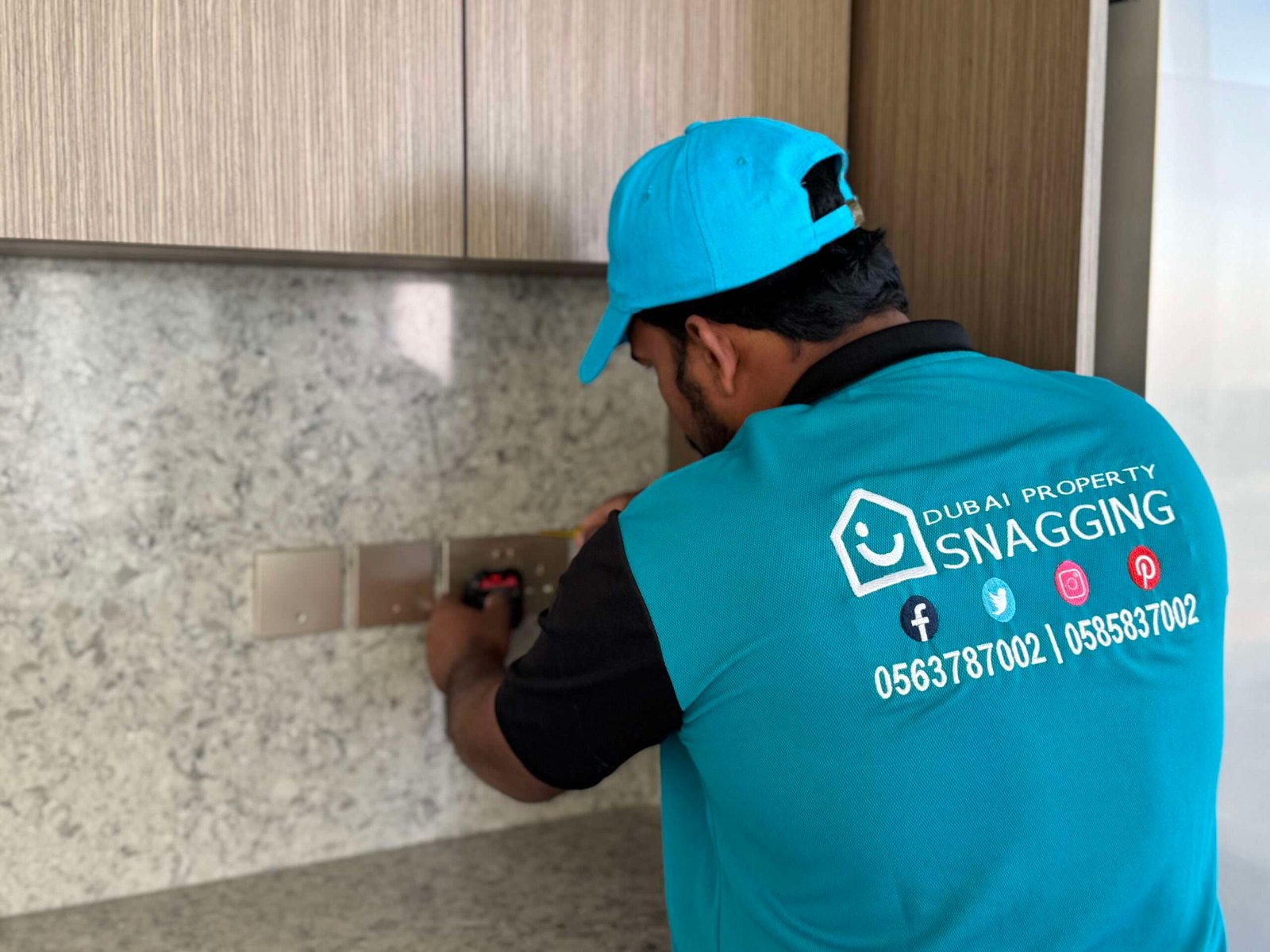How to Identify Hidden Property Defects During Snagging
When it comes to purchasing a property, especially in fast-growing markets like Dubai, the importance of snagging cannot be overstated. Snagging refers to the process of identifying any property defects or issues that may have been overlooked during construction or handover. It is an essential step for homeowners, apartment owners, real estate investors, and even developers to ensure the property is in the best possible condition before taking ownership. In this blog, we will explore how to identify hidden property defects during snagging and why this step is crucial for ensuring the longevity and safety of your investment.
What is Snagging?
Snagging is the process of inspecting a property to identify any defects, incomplete work, or issues that might have been missed during the construction phase. The goal of snagging is to catch these problems before the final handover and to ensure that the property meets the agreed-upon standards. Whether you’re a homeowner or a real estate investor, snagging is crucial for safeguarding the quality of your investment.
Types of Snagging Inspections
There are different types of snagging inspections you might encounter:
- Handover Inspection: A thorough inspection conducted before the property is officially handed over to the buyer.
- Warranty Inspections: Inspections conducted within the warranty period to ensure that the property still complies with the agreed standards.
- Secondary Market Inspections: Inspections for properties that have already been sold and resold in the secondary market.
- Property Snagging: The overall term that covers inspections to identify defects in any property, whether newly built or previously owned.
Why is Snagging Important?
Snagging plays a critical role in ensuring that you don’t inherit a host of problems that could become costly to fix down the road. It helps in identifying:
- Property Defects: From minor cosmetic issues to major structural problems, snagging helps to spot any issues that could affect the safety, usability, or value of the property.
- Quality Assurance: Ensures the property meets the construction quality standards promised by the developer, helping maintain high standards across Dubai Properties and other locations.
- Avoiding Legal Disputes: If issues are not flagged during the snagging process, property buyers could face legal disputes with the seller, especially if defects remain unaddressed during the Defect Liability Period.
By addressing these issues early on, you can avoid potential frustrations and costs associated with unresolved defects.
When Should You Conduct Snagging?
The timing of your snagging inspection is crucial to ensure that you’re not overlooking any hidden property defects. Here are the key moments when snagging inspections should be carried out:
1. Before Handover (Handover Inspection)
A handover inspection is performed just before the property is handed over from the developer to the buyer or homeowner. This is the ideal time to identify defects, especially in newly built properties. It allows you to ensure that all work has been completed to satisfaction before the final handover.
During this stage, Snagging Engineers will examine the property and provide a Snagging Report with a list of any issues that need addressing.
2. During the Defect Liability Period
Most properties come with a Defect Liability Period from the developer, which typically lasts between one to two years. This period allows the buyer to request repairs or adjustments for defects that were missed during the initial inspection. It’s essential to conduct regular warranty inspections to ensure that all defects are addressed within this period.
3. Secondary Market Inspections
If you are purchasing a property in the secondary market, it’s even more critical to conduct a snagging inspection. These properties may have hidden defects that may not be immediately visible to an untrained eye. A property inspection at this stage will give you peace of mind knowing that you’re not inheriting problems from the previous owner.
How to Identify Hidden Property Defects During Snagging?
Now that we’ve discussed the importance and timing of snagging, let’s dive into the process of identifying hidden property defects during snagging. The goal is to spot issues that are not immediately visible and could affect the property’s longevity and value.
1. Look for Water Damage or Dampness
Hidden water damage is one of the most common and costly issues in a property. Check for signs of dampness, especially in hidden areas such as behind walls, under sinks, and in corners of bathrooms. Look for mold, water stains, or peeling paint, which could indicate underlying issues like faulty plumbing or improper waterproofing.
2. Examine the Structure and Foundation
The structure and foundation are the most critical aspects of a property. During the snagging inspection, ensure that there are no cracks in the walls, ceiling, or floors. Uneven floors can also indicate a structural issue, such as foundation settling. Use a level tool to check for any unevenness that might not be visible at first glance.
3. Check for Electrical and Wiring Issues
Hidden electrical faults can pose a serious safety risk. Inspect all electrical sockets, switches, and light fixtures. Flickering lights, non-functional outlets, or tripping circuit breakers could be signs of underlying wiring issues. It’s also important to check for proper grounding and the installation of circuit breakers.
4. Inspect the Plumbing System
Plumbing defects are often hidden and can cause significant damage over time if not identified early. During your property inspection, check for leaks, slow drainage, or water pressure issues. Run water in sinks, tubs, and showers to ensure everything is functioning correctly. Look under sinks for any signs of leaks or water damage.
5. Verify the Quality of Finishes and Materials
Pay attention to the quality of finishes, such as flooring, tiling, and cabinetry. Small issues, like poorly installed tiles or misaligned cabinet doors, can be overlooked but can affect the overall quality of the property. Snagging Engineers will help identify any cosmetic defects that could indicate poor craftsmanship.
6. Assess Doors and Windows
Improperly sealed or poorly installed doors and windows can lead to drafts, energy inefficiency, and water leaks. Check for proper alignment, smooth operation, and sealing around frames. If windows or doors don’t open or close properly, it could be a sign of structural movement or poor installation.
What Should a Snagging Report Include?
A detailed report should accompany your snagging inspection. A Snagging Report is a comprehensive document that lists all the identified defects or issues in the property. It should include:
- A description of each defect.
- The location of the defect.
- The severity of the defect (minor, major, or critical).
- Recommended actions to rectify the issue.
- Estimated costs for repair (if applicable).
The Snagging Report will serve as a crucial document for negotiations with the developer or seller, ensuring that all issues are addressed before finalizing the property handover.
Conclusion
Identifying hidden property defects during snagging is crucial to safeguarding your investment, whether you are a homeowner, apartment owner, or real estate investor. A thorough snagging inspection can help you detect issues early, saving time, money, and future frustrations. By scheduling regular property inspections with experienced snagging engineers and ensuring you receive a detailed report, you can address all property defects before they escalate.
With the right Inspection Services and attention to detail, you can ensure that your property meets the highest standards of quality and that your investment in Dubai Properties or any other location remains sound for years to come.





